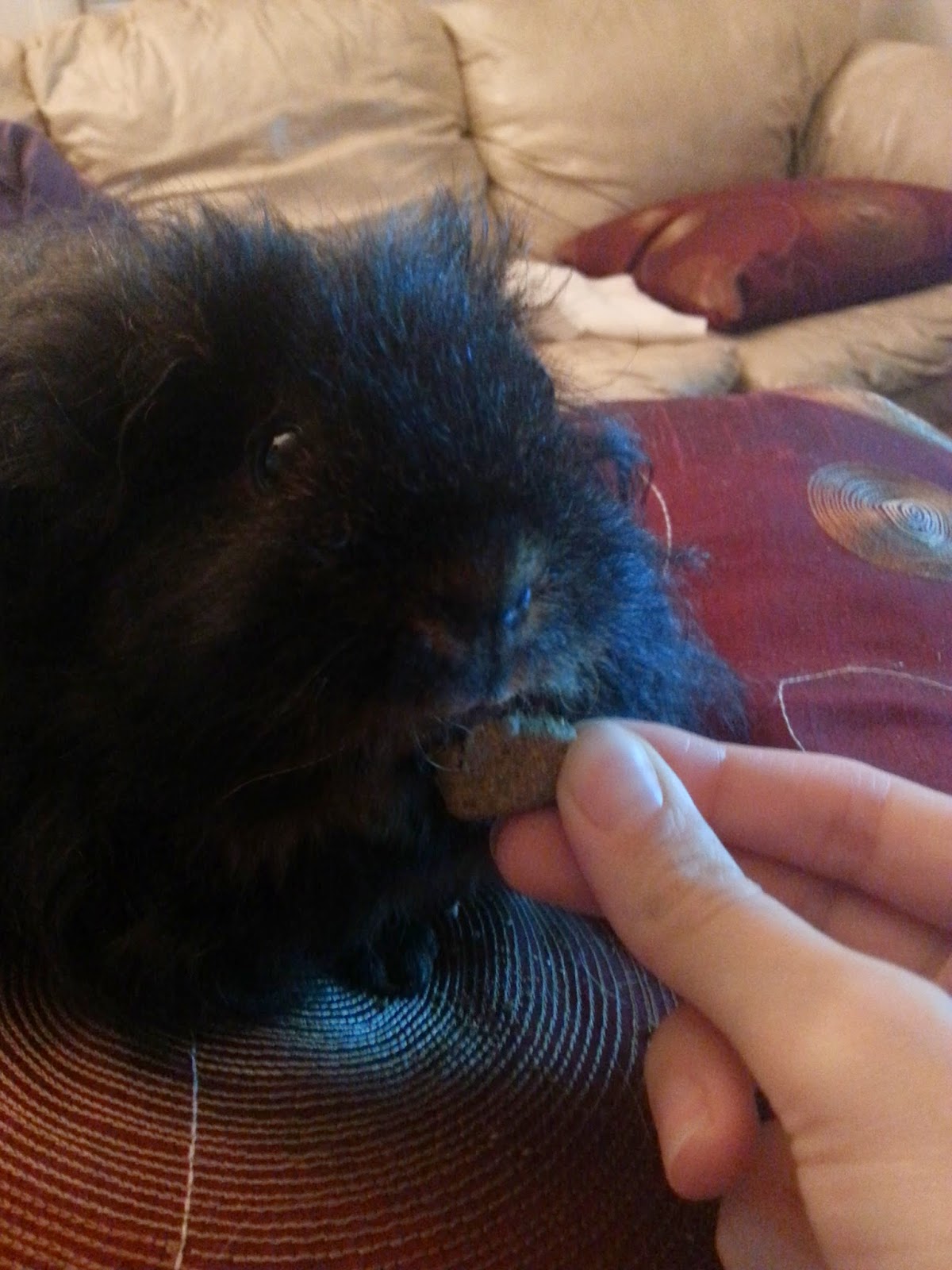We're not quite sure what name we should use for these peppers. The farmer's market that the humans got them from simply labeled them as "Colored Peppers." But colored just means having color, which all bell peppers do, so we think calling them "multicolored peppers" would be better. We also think that "rainbow peppers" might be a good name, but we found out there's a type of pepper called a
Bolivian Rainbow Pepper, which is a hot pepper, not a bell pepper. We definitely don't want there to be any confusion, so we're going to avoid that term so no one thinks it's okay for guinea pigs to eat hot peppers. (Let's repeat this so it's absolutely clear: Bell peppers are fine for guinea pigs, but
not hot peppers!) Therefore, we're going with the term "multicolored peppers."
So what's the deal with these multicolored peppers? As
we previously mentioned, peppers generally start out as
green peppers, and as they mature, then they turn
yellow and
orange, and finally they become
red peppers (or other colors like
purple, depending on the variety) when they're fully mature. From what we've gathered from looking at
pictures of maturing peppers, this color change process doesn't happen evenly across the entire pepper. Parts of the pepper will start changing color before others, so you'll end up with multicolored peppers like these:
 |
| So this is a natural process, not some kind of Frankenstein pepper? Got it. Let's eat it! |
As for how often to feed them, we recommend treating them as the type of pepper they most closely resemble. If it's mostly green, you can treat it as a green pepper and feed it
almost daily. If it's mostly red, treat it as a red pepper and feed it
2-4 times per week. If the colors are pretty evenly mixed, go with the more restrictive category (2-4 times per week).
 |
| So tasty! I'm going to enjoy my pepper chunk away from the dominance struggle of those two. |
 |
| Hey, where did that reddish pepper chunk go that I had my eye on? |
This should come as no surprise since we love peppers of all colors, but we give multicolored peppers 5/5 stars!














